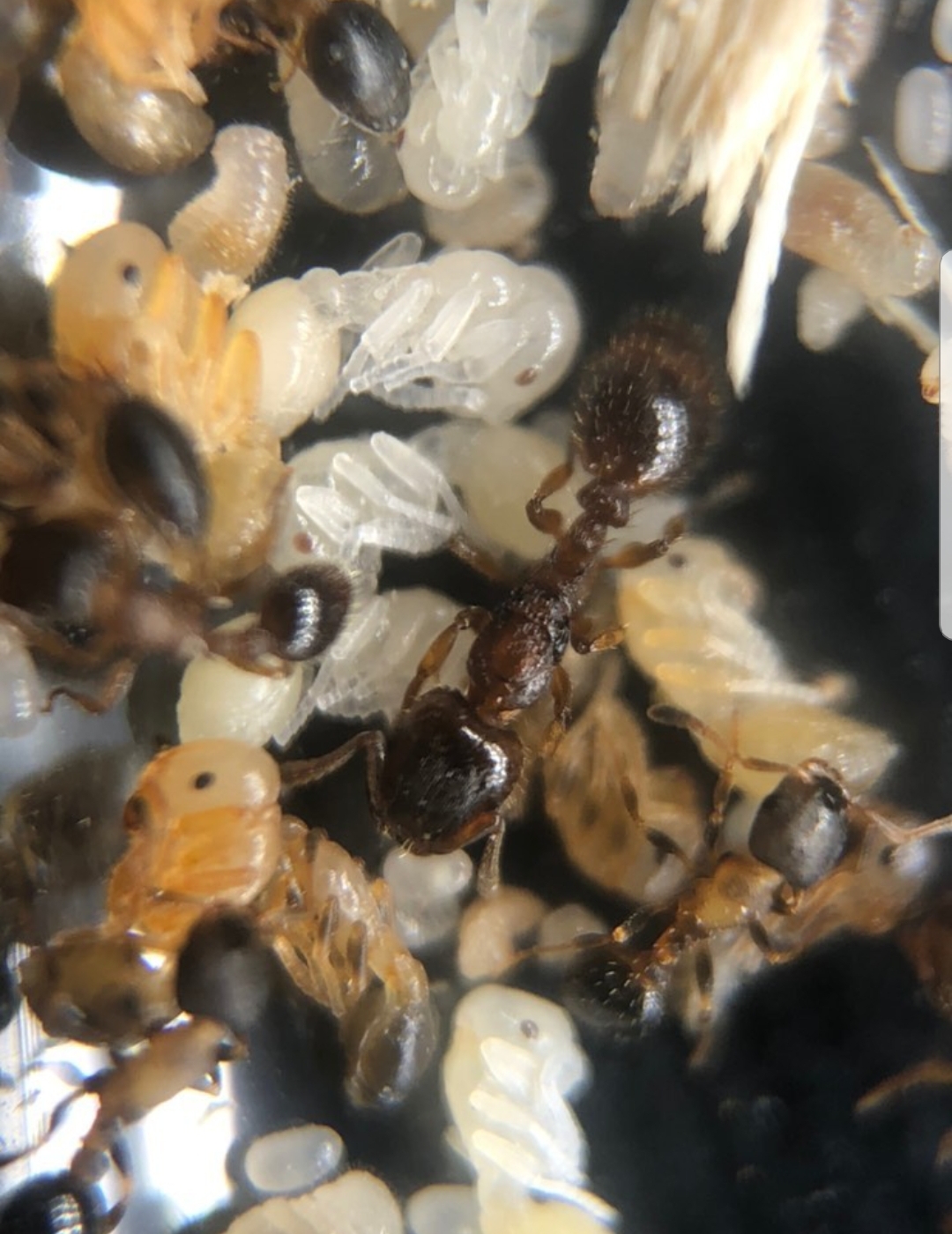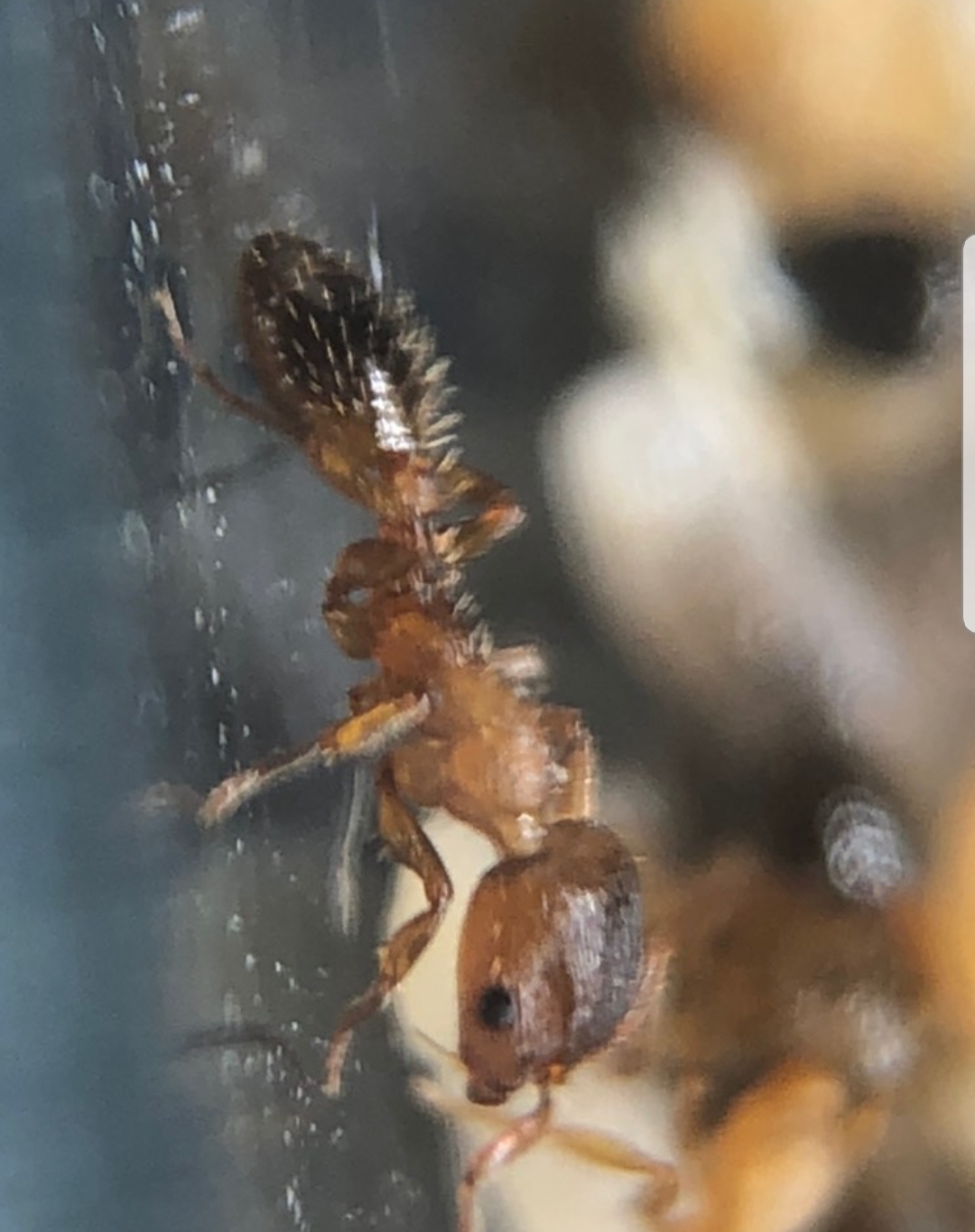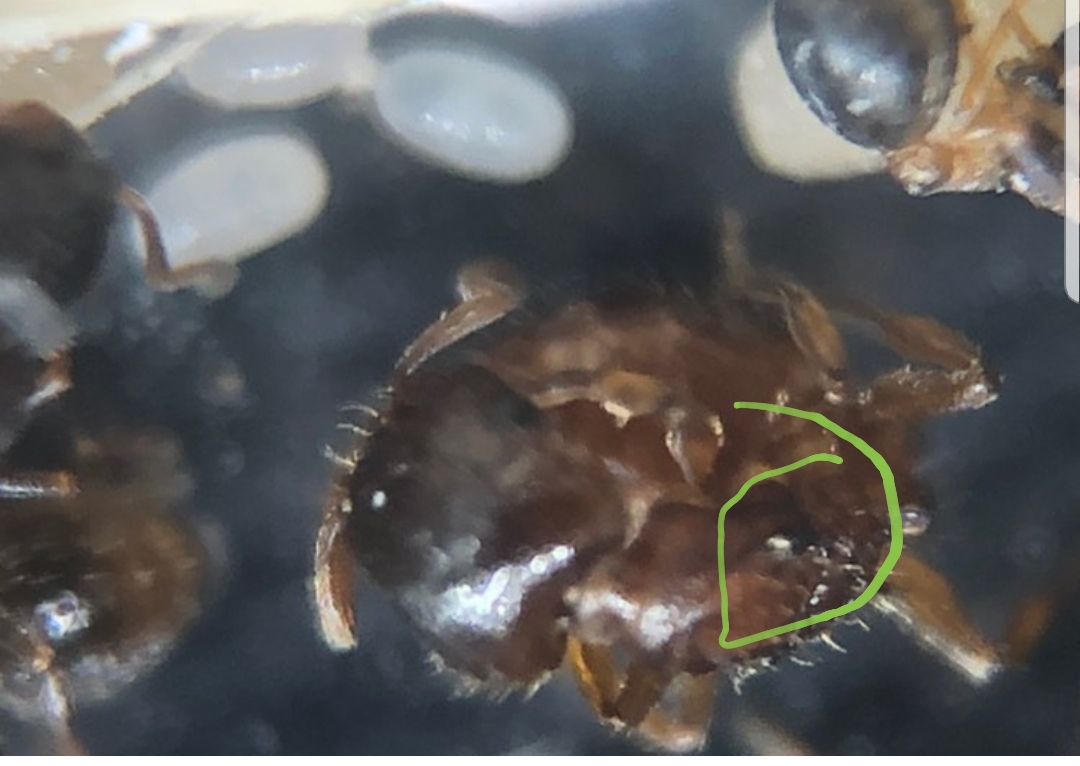The queen surrounded by slaves

A worker

Edited by Manitobant, August 22 2024 - 9:11 AM.



Edited by Manitobant, August 22 2024 - 9:11 AM.
Wonderful! The Ants describes their behavior in detail, was very fun to read about. I'd assume it'll be even more fun to watch!
That is the least queen-looking queen I've ever seen.
"God made..... all the creatures that move along the ground according to their kinds (including ants). And God saw that it was good. Genesis 1:25 NIV version
Keeping:
Formica cf. pallidefulva, cf. incerta, cf. argentea
Formica cf. aserva, cf. subintegra
Myrmica sp.
Lasius neoniger, brevicornis
That is the least queen-looking queen I've ever seen.
I concur.
Ants I have: Tapinoma sessile(2 queen colony). RED MORPH Camponotus neacticus(now has pupae!), Tetramorium immigrans (x3), Aphaenogaster sp, Temnothorax sp, Brachymyrmex sp. possibly infertile ![]() , Ponera pennsylvanica, and Pheidole morrisi!
, Ponera pennsylvanica, and Pheidole morrisi! ![]()
Other insects: Polistes sp. Queen
Ants I need: Pheidole sp., Trachymyrmex sp., Crematogaster cerasi , Dorymyrmex sp. Most wanted: Pheidole morrisii
That is the least queen-looking queen I've ever seen.
I concur.
Ergatoid gynes, anyone?
She's definitely an alate queen. Although harpagoxenus does have ergatoids, you can see wing scars on this one.

Edited by Manitobant, July 16 2020 - 9:01 AM.
i mean she is also a social parasite so she doesn't look very queen like to begin withI think he was trying to say that ergatoids are less queen looking than that queen.
i mean she is also a social parasite so she doesn't look very queen like to begin withI think he was trying to say that ergatoids are less queen looking than that queen.
Well, to me she looks more like a worker than a queen. Most common social parasites actually do look like queens imo.
"God made..... all the creatures that move along the ground according to their kinds (including ants). And God saw that it was good. Genesis 1:25 NIV version
Keeping:
Formica cf. pallidefulva, cf. incerta, cf. argentea
Formica cf. aserva, cf. subintegra
Myrmica sp.
Lasius neoniger, brevicornis
Update?
Hi there! I went on a 6 month or so hiatus, in part due, and in part cause of the death of my colonies.
However, I went back to the Sierras, and restarted my collection, which is now as follows:
Aphaenogaster uinta, Camponotus vicinus, Camponotus modoc, Formica cf. aserva, Formica cf. micropthalma, Formica cf. manni, Formica subpolita, Formica cf. subaenescens, Lasius americanus, Manica invidia, Pogonomyrmex salinus, Pogonomyrmex sp. 1, Solenopsis validiuscula, & Solenopsis sp. 3 (new Sierra variant).
Dead. the colony slowly fizzled out after hibernation, with worker deaths occuring almost every week. Eventually, only the queen and a dulotic worker were left, and me or my friend didn’t have any leptothorax hosts, so i decided to re hibernate them in the very slim chance that they would survive until spring. Sadly, they didn’t and i found the queen dead about a week ago while taking out some lasius claviger queens for experiments. I do hope to try these again, and hopefully get a larger colony. The colony was very young when they were caught, with the queen just having got her nanitics. I do plan to go to that spot with my friend, so this journal will probably come back in due time.Update?
Edited by Manitobant, March 25 2021 - 1:31 PM.
![]()
May they rest in peace.
![]()
Hi there! I went on a 6 month or so hiatus, in part due, and in part cause of the death of my colonies.
However, I went back to the Sierras, and restarted my collection, which is now as follows:
Aphaenogaster uinta, Camponotus vicinus, Camponotus modoc, Formica cf. aserva, Formica cf. micropthalma, Formica cf. manni, Formica subpolita, Formica cf. subaenescens, Lasius americanus, Manica invidia, Pogonomyrmex salinus, Pogonomyrmex sp. 1, Solenopsis validiuscula, & Solenopsis sp. 3 (new Sierra variant).
Edited by Manitobant, August 22 2024 - 9:17 AM.
0 members, 0 guests, 0 anonymous users